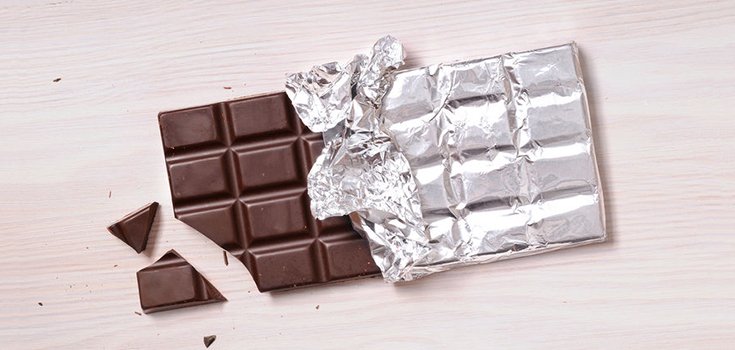Scientists Develop a Milk Chocolate as Healthy as Dark Chocolate

A lot of people love dark chocolate, but let’s face it – the bitterness and lack of milky sweetness is sometimes a turn-off. What dark chocolate sometimes lacks in flavor, it makes up for in health benefits. But now scientists have come up with a way to make milk chocolate as healthy as its dark counterpart.
Researchers from the University of North Carolina took phenolic compounds from peanut skins, turned them into a sweet edible powder, and added them to milk chocolate to alter the health benefits of the product. [1]
Phenolic acids are what give dark chocolate its antioxidants. These antioxidants protect against cellular damage from the oxidative stress of free radicals. Oh, but we’re just getting started. Nibbling on a piece of antioxidant-rich dark chocolate comes with some pretty sweet health perks, including:

- Reduced signs of aging
- Lower risk of Alzheimer’s, multiple sclerosis (MS), heart disease, and cancer
- Stroke prevention
- Decreased risk of colon cancer
- Enhanced glucose (blood sugar) metabolism
- Improved mood
- Improved brain function
- Fewer PMS issues
In the souped-up milk chocolate, researchers used the food additive maltodextrin to cut the bitter flavor from the peanut skins. The substance is typically derived from GMO corn. Tapioca maltodextrin is considered safer, but it’s harder to come by and rarely used by the food industry. The researchers didn’t specify which type of maltodextrin they used, but it’s safe to assume it was corn-derived. [2]
Used as a food filler, thickener, and preservative, the U.S. Food and Drug Administration (FDA) considers maltodextrin safe for human consumption. However, it is known to spike your blood sugar, so it’s not safe for people with diabetes or insulin resistance.
In all fairness, though, most commercially-made milk chocolate already contains maltodextrin.
Eighty people were given samples of the milk chocolate containing the compounds and regular milk chocolate, and the taste-testers couldn’t tell the difference, the authors wrote in the Journal of Food Science. [1]
The tests revealed that the amount of peanut skins needed to transform the chocolate was so minimal that people didn’t even notice their presence.
Lead author Lisa Dean said:
“If applied to commercial products, peanut skin extracts would allow consumers to enjoy mild tasting products and have exposure to compounds that have proven health benefits.”
Another perk is that it makes use of peanut skins that would otherwise be considered food waste.
Sources:
[1] Independent
[2] Newser
